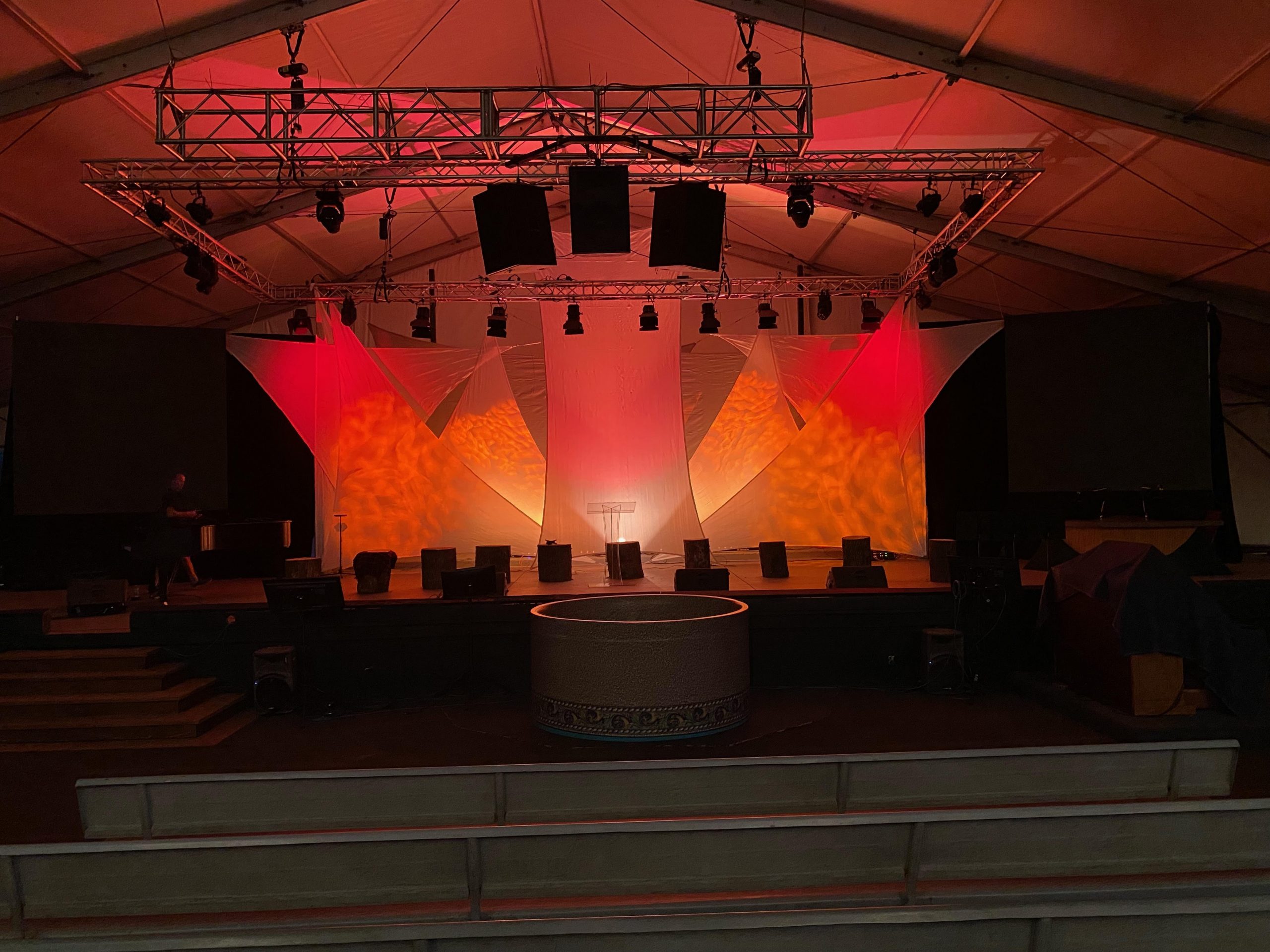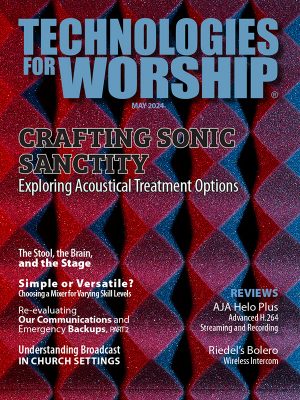
by Tim Adams
Many churches have already integrated LED lighting into their sanctuary spaces, and when planning the upgrade, they are faced with a choice-do they want white-only lighting, or do they want the option of having color-changing fixtures?
What advantages do color-changing fixtures bring over white fixtures? How can they be used in a worship service to enhance the experience? And for some of our readers, how do we propose the idea of color-changing fixtures in a church that feels such a change would violate the sanctity of the sanctuary?
These are important questions to find answers to, so let’s dive right in:
There can be several advantages to having color-changing LED lighting in the sanctuary, primarily to change the atmosphere of the room. We have long been taught, even if only subconsciously, to associate certain colors with moods and feelings and this can be used to deliver a more immersive and meaningful experience to your programs. For example, your church might be planning a special Christmas program and being able to turn the entire room a deep blue could help your program feel like it’s the night of Jesus’ birth. Or you might have VBS and your room can be changed to bright yellows, greens, oranges, purples to increase the energy and excitement in the room.
There are limits to using color in your regular services, though. Even contemporary churches need to exercise caution in using color-changing during a service, even for stage lighting. Depending on your worship style, the demographic in your community (or online) you are trying to reach, the support of your members and your leadership, high energy lighting may not be for you.
That doesn’t mean you can’t use color changing fixtures, but they will likely be used in a more subtle way. For instance, I love to have warm white lighting for my main stage wash, but I prefer a cool white or even blue for my back lights. Not only does it show up clearly to the naked eye and to the camera, but I have found you don’t need as much lighting energy for your backlighting when it’s a different color than the front lighting. This saves money on additional fixtures that you don’t necessarily need.
House Lighting
You can also look at putting color-changing LED fixtures for your house lighting, too. This can have dramatic impacts for your programs, so it’s important that you research and understand color theory and what colors evoke which emotions and feelings so you can maximize the impact of that lighting. But it can be quite powerful when you get it right and can leave a lasting impression on those who were present in the room to experience it!
Color changing LED fixtures have moved way beyond the simple red, green, blue lights that were around when I entered into professional stage lighting. We now have a host of options to choose from when it comes to colored LED chips and combinations. RGB, RGBA, RGBW, RGBAW, RGBAL, RGBAW+UV…how do you know which one to choose?
Understanding the Acronyms
First, let’s break down what each letter stands for: R (red), G (green), B (blue), A (amber/warm white), W (cool white), L (lime), UV (ultraviolet)
There are various research-based reasons for these various combinations, and each have their price point and feature set. For most churches, being able to integrate with existing lighting could be very important, so having a good, solid warm white LED source is important to match your older halogen fixtures. Many churches can’t afford the cost of upgrading to all LED at once and thus have to upgrade in phases. Trying to match a cool white LED fixture with a warm white halogen fixture could be a recipe for chasing your tail on trying to find a white balance that looks good on your camera and could lead to inconsistent lighting and images, so make sure to do your research to which LED combination will work best in your space given any budget realities you have to work within.
There will be some churches that will actively fight a lighting upgrade that promises color-changing capabilities because they feel it’s too “disco,” or too worldly, too flashy or some other adjective that basically means they don’t want it. Their reasoning is that the sanctuary is sacred and should be treated as such. By installing and using color-changing fixtures, it will be too distracting and will not maintain the respect and sanctity the room has.
This can be a hard argument to work around, and there will be some of you who experience a solid brick wall of resistance and there is no compromise, no willingness to listen or to even see a demo or visit a facility that has color changing fixtures to experience it firsthand. All I can say in those situations is to pray and be open to finding another church if that is something you feel God leading you to. Typically, these kinds of “stonewall” attitudes often are indicative of deeper issues that manifest in other areas of the church and can lead to spiritual stagnation and exclusion.
For those who encounter some resistance but have a Board or committee open to discussion, being able to show or let your decision-makers experience what a service can be like will find a much more receptive response, by and large. We live in a world of color and being able to use color as yet another ministry tool to subconsciously inform our churchgoers what they should be feeling or what a worship song evokes is important.
In many ways, lighting is a way tech can help participate in worship visually, through a palette full of colors that helps create an atmosphere of worship and that can have a profound impact on those in attendance and on the techs themselves.
I have a good friend who is an amazing visual storyteller, filming some of the most amazing wedding films I have come across; he is truly gifted. A few years ago he took up event lighting, as well, and that guy has come alive and does phenomenal work and it’s been amazing to watch from a distance as he steps into the glory God bestowed on him.
Let’s not forget the first thing God created was light and that it was good. We can harness that creation to light our spaces to bring honor and glory back to the God who created us, saved, and redeemed us and calls is His.

Tim Adams spent over 20 years volunteering in church technical ministry and now focuses on helping small churches achieve technical excellence through equipment upgrades, training, sharing best practices and teaching leadership how to cast God-sized vision.





